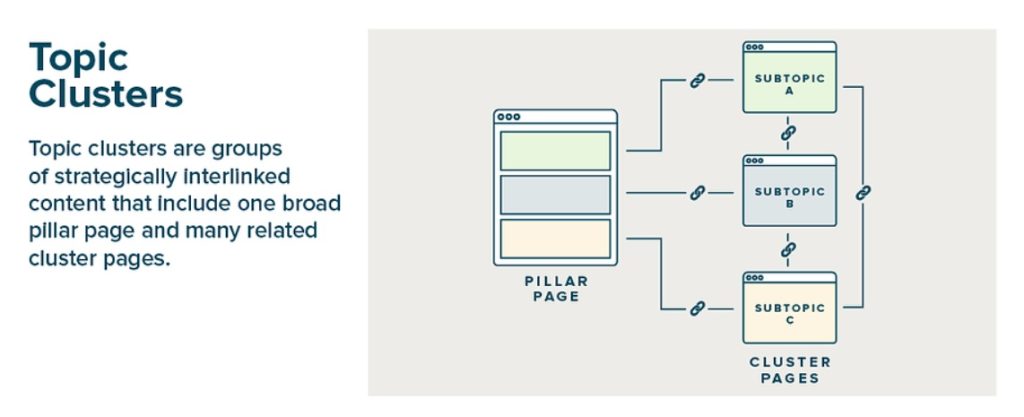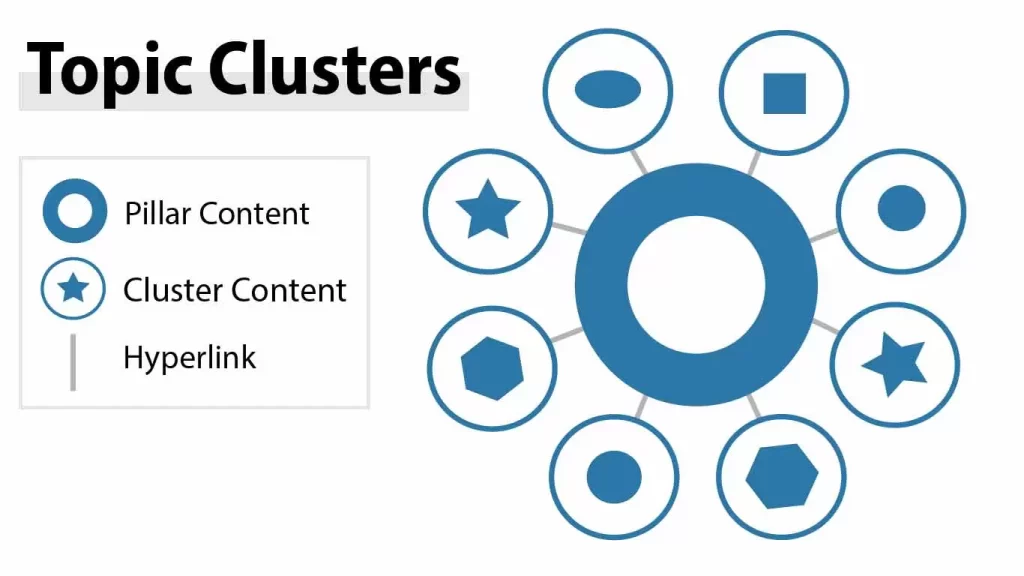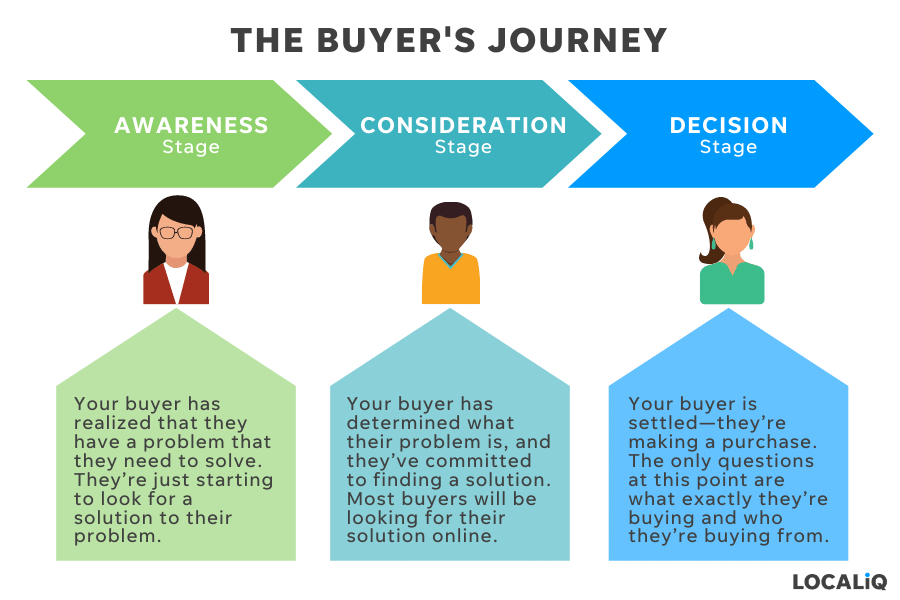If you’re reading this article, you’re on the path to uncovering the secrets behind this revolutionary strategy in SEO Content Planning.
Mastering Topic Clusters in SEO means moving from a keyword-centric content approach to a more holistic, Managed SEO Content Strategy.
This guide will explore this concept, its components, and its significance in modern SEO. Read on;
Table of Contents
– What is a Topic Cluster?
A topic cluster is a content strategy where multiple pieces of content revolve around a shared topic and its related subtopics.
This approach ensures that a website offers comprehensive coverage of a subject, enhancing both user experience and search engine rankings.

The whole idea of Building Topic Authority isn’t new, but its prominence in SEO has grown significantly in recent years.
The concept has its roots in the way we naturally organize and categorize information.
Just as chapters in a book are grouped under a unifying theme, web content can be organized around central topics, making it easier for users to find and navigate related information.
Since the rise of semantic search and the introduction of algorithms like Google’s Hummingbird in 2013, there has been more emphasis on the importance of content relevance over individual keyword matching.
This shift, ultimately led content marketers to think beyond isolated keywords and focus on broader topics, giving birth to the structured approach of a topic cluster content strategy.
– Components of a Topic Cluster
In order to master Topic Clusters in SEO, it’s crucial to understand its components:

Pillar Content: This is a comprehensive page that covers a broad topic in depth.
It serves as the foundation for the topic cluster, addressing various subtopics and providing a general overview of the subject.
Cluster content forms the supporting pages that delve deeper into specific aspects or subtopics of the main topic.
They are vital in SEO since they cater to specific user intent, providing detailed information on each subtopic.
Lastly, Internal Linking refers to the art of creating links between the pillar content and cluster content.
These links signal the importance of the pillar page and the related pages to search engines and ultimately help improve the site’s visibility.
– Guiding The Buyer’s Journey Through The Use Of Topic Clusters
A good topic cluster strategy should be designed with the buyer’s journey in mind. This journey typically consists of three stages:

Awareness: The potential customer realizes they have a problem or need.
Consideration: Where the potential customer evaluates different solutions to their problem.
Decision: When the potential customer should decide on a solution.
Mastering Topic Clusters will help you ideate content tailored for each stage of this journey, ensuring that visitors find relevant and valuable information no matter where they are in their decision-making process.
The SEO Impact of Mastering Topic Clusters
Here’s why Mastering Topic Clusters in SEO is so essential:
Building Topical Authority: Topic clusters help websites establish themselves as authorities on specific subjects.
This is because search engines, especially Google, now favor websites that provide comprehensive coverage of a topic.
Eliminating Keyword Cannibalization: In the past, websites often created multiple pages targeting different keywords, leading to repetitive and shallow content.
Topic clusters prevent this by ensuring depth and variety in content structure.
Improved User Experience: By organizing content around topics, websites can offer visitors a more structured and intuitive browsing experience.
Improved Internal Linking: Effective internal linking within clusters helps distribute PageRank, enhancing the performance of individual pages on search engine results.
Satisfying User Intent: They also ensure that each copy created satisfies the search intent of users, which search engines prioritize.
– Implementing Topic Clusters in Your Content Strategy
In case you missed it, our previous article discusses in depth how to create an effective topic cluster content strategy.
While I should advise you to visit the topic to understand the concept in detail, here are a few key points we discussed;
1. Identifying the Core Topic:
Start by brainstorming potential core topics that resonate with your brand or industry.
Also referred to as Primary Keyword, this topic should be broad enough to inspire multiple subtopics but specific enough to remain focused.
2. Conducting Keyword Research:
With a general idea of your main topic, now dive deep into keyword research to identify potential subtopics, and secondary keywords, as well as understand user intent behind each query.
This will help in shaping the content for the cluster pages.
3. Content Audit:
If you haven’t already done so, conduct a thorough content audit to identify existing content that can be grouped into clusters and determine gaps that need to be filled.
4. Use SEO Tools and Clustering Techniques:
At this step, you should have a detailed list of the keywords you would possibly target.
The next step will involve clustering keywords so that you can get a general idea of the topics to target.
Generally, each topic cluster should have multiple subtopics supplemented by supporting keyword clusters.
5. Identify Pillar Topics:
From your topic clustering results, choose broad topics relevant to your industry or niche that can serve as pillar pages.
These should be comprehensive enough to branch out into multiple subtopics.
6. Creating Optimized Content:
With the core topic and subtopics identified, focus on producing high-quality, relevant content.
At this point, you have to intuitively assign keywords to each target page, making sure to limit any keyword cannibalization issues.
Begin with the pillar page (main theme), ensuring it provides a comprehensive overview of the main topic.
7. Create Cluster Content:
Subsequently, for each pillar topic, create detailed cluster pages that delve deep into the subtopics.
Ensure that each cluster page provides value and addresses specific user intents.
8. Internal Linking:
To be successful in this approach, you will need to demonstrate to search engines the relatedness of content within each target topic cluster.
Therefore, in addition to linking from the pillar page to the subsequent cluster pages, you must also link each cluster page back to its respective pillar page using rich descriptive anchor texts.
This not only helps in SEO but also guides the reader to explore the broader topic.
9. Regularly Update Content:
Lastly, ensure that your pillar and cluster pages are regularly updated with fresh information to remain relevant and authoritative.
– Real-world Topic Cluster Examples
With the evolving concept of building Topical Authority, many brands and platforms have recognized the value of topic clusters and have seamlessly integrated them into their content strategies.
By doing so, they’ve not only enhanced their SEO but also provided a more structured and user-friendly experience for their audience.

While any website can implement this concept to build topical authority, listed below are a few examples of three different industries and how they can apply the use of Topic Clusters:
– Cooking Blogs:
Culinary enthusiasts often turn to cooking blogs for inspiration and recipes.
Recognizing this, many blogs have adopted topic clusters to streamline their content.
For instance, a blog might have a central pillar page dedicated to “Italian Cuisine,” branching out to cluster pages on specific dishes like “Pasta Carbonara,” “Tiramisu,” and “Risotto.”
This approach allows readers to dive deep into Italian cooking, exploring its various facets from a central hub.
– Tech Companies:
To effectively communicate their diverse offerings, many tech firms use topic clusters.
A company might have a pillar page focusing on “Cloud Computing,” with cluster pages delving into topics like “Benefits of Cloud Computing,” “Cloud Security Measures,” and “Choosing the Right Cloud Service Provider.”
This structure ensures that potential clients can easily navigate and understand the breadth and depth of the company’s services.
– E-commerce Platforms:
Online shopping has become a staple for many, and e-commerce sites are always looking for ways to enhance user experience through product topic clustering.
For example, an online fashion store might have a pillar page on “Men’s Fashion Trends 2023.”
This main page could then link to cluster pages discussing “Summer Outfits for Men,” “Winter Jacket Trends,” and “Footwear Essentials.”
Such a setup ensures that shoppers can easily find and explore the latest trends, all from a central location.
CONCLUSION
By embracing topic authority, content creators and marketers can ensure that their content strategy is aligned with modern SEO best practices. Mastering Topic Clusters in SEO underscores the importance of authority, depth, relevance, and structure in content, ensuring that brands not only rank well in search results but also provide genuine value to their audience. In the long run, this approach not only improves search engine rankings but also provides visitors with a richer and more valuable browsing experience.



